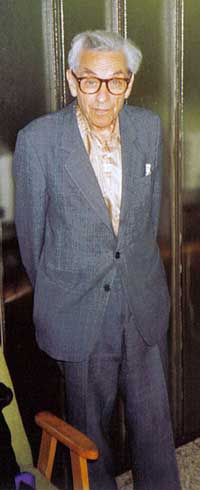Paul Erdös was (1913-1996) a Hungarian-born mathematician known for being prolific (about 1,500 papers with about 510 co-authors) and eccentric. As to the latter, he spent most of his life traveling from place to place, staying in the homes of colleagues. Most of his possessions fit into his suitcase, and after staying a few days he would move on to the next colleague, for another few days of collaboration.
In this way, Paul demonstrated that science is a social enterprise. Research is conducted and papers are published through clusters networked scientists working together. In fact, Paul is known for research in random graph theory with Alfred Renyi (the latter is also known for saying that “a mathematician is a machine for turning coffee into theorems”).
Because of Paul’s research and behaviors, we was a bit of a star in the scientific community. Then, and perhaps more so today, it is popular to calculate one’s Erdös Number, which is basically a way of measuring the publication distance between one person and Paul Erdös.
For example, someone who co-authored a paper with Paul would have an Erdös Number of 1, and there are about 510 people with this Erdös Number. Someone who wrote a paper with a co-author of Paul Erdös would have an Erdös Number of 2, etc.
Note that having a small Erdös Number is something that many people take quite seriously.
Currently, my Erdös Number is 3.
The Erdös Number Project is organized to study research collaborations, and contains a large amount of information about collaboration research, information about Paul Erdös, and even allows you to calculate your own Erdös Number. This project is a subset of a much larger field of study on random graphs, clustering, the structure of the Internet, computer networks, data analysis, and social networks. If you have ever heard someone say “It’s a small world!!!” or have ever played the game Six Degrees of Kevin Bacon, then in a sense all this research about the structure of networks is about explaining this small-world phenomenon.
A quote from the book Linked: How Everything Is Connected to Everything Else and What It Means perhaps summarizes the intense interest in the Erdös Number and the structure of networks:
The very existence of the Erdös Number demonstrates that the scientific community forms a highly interconnected network in which all scientists are linked to each other through the papers they have written. The smallness of most Erdös Numbers indicates that this web of science truly is a small world.

